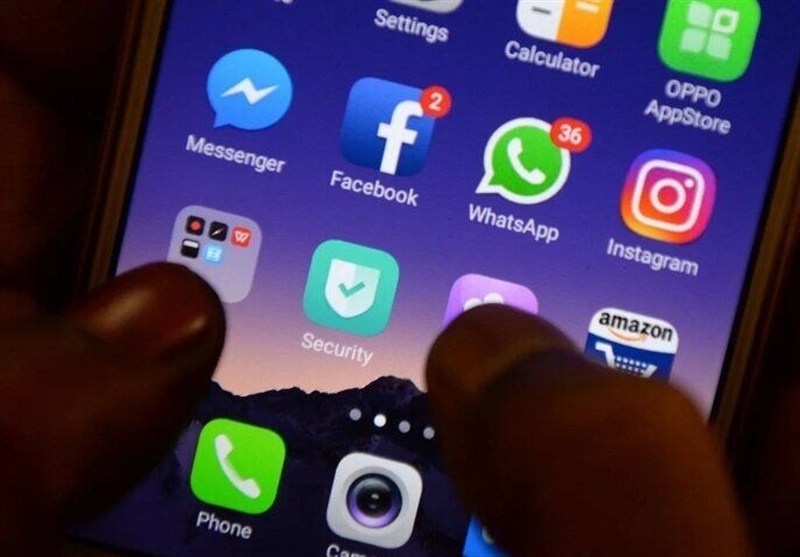According to the social reporter of Tasnim news agency; Hojjat-ul-Islam wa al-Muslamin Maisham Gholami, head of the Cyber Space Research Institute of the National Center for Cyber Space, stated at the opening ceremony of the fourth national conference of cyber space: From the point of view of managers and upstream institutions, cyber space services do not face any major challenges, but the more important issue is that the real importance of these services has not yet been realized in macro decision-making.
He said: For example, Mobarake Steel Company has more than 35,000 workers and recorded a profit of about fifty million dollars last year. But on the other hand, an internal book reading platform with only twenty-two employees creates a much broader response in the society when it comes to social challenges such as the hijab issue.
Gholami added: When such platforms that people deal with on a daily basis are disrupted, a large amount of society gets involved. Therefore, the government should pay special attention to the attachment of digital services, because the lack of this attachment will be a crisis in decision-making.
Referring to the research institute’s data, he said: According to recent studies, 61% of people use free filter breakers. This statistic is very important for researchers, because some of these filter breakers are directly related to foreign security institutions. For example, some well-known crackers such as Psiphon have publicly stated that they operate under the supervision of the US Department of Defense, as they must disclose their financial sources.
Gholami clarified: In fact, the consumption basket of Iranian users in the field of free filtering is one of the strategic indicators and should not be underestimated. Even in countries like Afghanistan, the percentage of using social networks and non-transparent internet tools is very high; This comparison shows that Iran is also on the same path.
He continued: In a global survey of more than five and a half billion people, the amount of daily use of the screen has been checked. The global average is about six hours, while in Iran this figure is reported as 7 hours and 10 minutes. It means that most of people’s daily time is spent in virtual space.
Gholami added: If the ratio of users’ time to virtual space in the country is ignored, we will face deep cultural and social challenges in the future. Because the focus of people’s daily life has been transferred to platforms.
He said: Studies show that there is a correlation between the amount of mobile phone use and content streaming with the state of municipal and social services; In countries that have desirable parks and urban spaces, the amount of use of virtual space is less.
Gholami warned against the growth of Internet addiction and stated: Global data shows that Internet addiction in Iran is higher than the regional and global average. This issue requires serious measures. One of the causes of this situation is the economic dimensions and inefficient management of the digital consumption portfolio.
He emphasized: It is necessary for the managers of this area to be able to adjust people’s consumption basket and have a scientific and social view towards the phenomenon of virtual space consumption, not just a political one.
Gholami said: In the coming days, new news about this area will probably be published; We must hope that these changes will be good for the country.
He said: “The current consumption in social networks should not increase, and at the same time, care should be taken so that internal messengers are not harmed.” This issue requires a scientific and non-political approach.
In the second part of his speech, the head of the Cyberspace Research Center of the National Center for Cyberspace said: Our universities are doing good things today, but in this “misnomer” of cyberspace, there must be a more correct word, even though that word is not Persian either. In the past, a friend suggested replacing the term “computer space”, but in the end, the same term as virtual space was used.
He added: In our universities, the cyber space is given less attention, and when the title “cyber space” is mentioned, the general perception is more towards social networks; While what I saw in the proposed themes of the conference, different parts of cyber security, digital space, business space, and content area were correctly summarized and presented, and this work is valuable.
Emphasizing the importance of this consolidation, he said: In many sectors, this work is done sporadically, but this consolidation is a respectful act.
Gholami stated: We are now in the post-war era, which has special requirements. A few days ago, I read an article from an Israeli think tank that presented a critical analysis of their performance in some parts of Iran. In that article, it was stated that Israel was unable to accompany Iran’s “body of society”. They had the idea that in the event of an incident, similar to Syria, after the prisons were opened, the prisoners would pour into the streets and this movement would become a spark for a social movement; But this did not happen in Iran.
He said: In the analysis of that think tank, the main reason was that Iran’s social networks are not at their disposal and they do not have the mindset of the Iranian society. In the continuation of the article, practical suggestions were presented to change this situation, which should be our attention.
Gholami noted: In the post-war era, it is very important to understand what image exists in the minds of the people and the general society. If I ask you what percentage of people are involved in the online shopping space, the numbers that come to mind are probably different from the actual statistics.
He added: According to the statistics of the National Computer Games Foundation, out of 29 million Iranian users, three million people play more than three hours a day. This group is mainly between the ages of 17 and 27, and a high volume of their conflict is formed in this context. This point is one of the serious vulnerable points.
The head of the virtual space research institute said: There are other baskets that should be opened for discussion. Our mental space of the society may be different from the existing reality and real data are far from mental perceptions.
Referring to the structure of cyberspace, he added: We have five serious layers in cyberspace; Not that these layers are unique to this field, but if someone finds excellence in them, it can be said that he has gained a more accurate understanding of the entire virtual space. These layers are expandable and anyone who goes through them can reach a deep understanding.
Gholami explained: One of these layers is access and infrastructure; An issue that raises important questions, especially in the days of power outages. Other layers include lifestyle and motivations for using cyberspace, readability, basic services, and functional services. The identity card of these departments is defined in the axis of “access to the Internet”.
Stating an important statistic, he said: One of the serious questions is why a large part of the society does not have an Internet connection. Our survey shows that 23% of the country’s population over 15 years old – about 15 million people – do not use the Internet at all. This finding leads analysts and researchers to important conclusions about the state of access and digital divide in Iran.
The head of the Cyber Space Research Institute of the National Center for Cyber Space, continued his words: Some data is presented by government institutions these days, which of course I do not confirm, but based on this data, it is said that 85 percent of people use VPNs, filters or filtering tools.
He added: As a researcher, you should intersect this figure in an analytical matrix. When we talk about 85% of the society and we learned in the previous section that about 15 million people do not have a direct connection to the Internet, we must analyze these two data together to get closer to the reality.
Gholami clarified: My purpose in presenting this section is that the data should be narrated accurately. If I was able to institutionalize this sentence in your mind, I feel that I have succeeded in this meeting. You should not ignore numerical ratios and simple quantitative data.
He further stated: In the behavioral survey of users, examples from people who are less literate show that they spend more time on long and scattered pages. The combination of this data with different ages shows which of the 15 million users have the most access to the Internet. The highest access rate is related to people under 58 years old, and the lowest access level is related to older age groups.
Gholami emphasized: This data is very important, because the population of our country is moving towards the aging of the population. If the elderly are not provided access to and training on the Internet, an important part of public and social services will not be provided to them.
He said about the results of the opinion survey on the quality of the Internet: In the surveys conducted, the level of satisfaction of users with the Internet in the country is low. Of course, it should be noted that this picture should not be seen as absolute, because the data show differences in more detailed segmentation.
He added: According to the obtained data, about 2.4% of people are “very satisfied”, 17% are “somewhat satisfied”; In contrast, 41 percent are “not very satisfied” and 38 percent are “not at all satisfied”; While only 2% did not answer. This statistic shows that a large part of people are dissatisfied with the quality of the Internet, although there is relative satisfaction in some parts.
The head of the virtual space research institute also stated about the usage of filter breakers: According to the survey, households pay certain amounts for the purchase and use of filter breakers, which is a kind of “hidden cost of technology”. The results show that 10% of users “almost always have their filter breaker on”, 53% “often turn it off but turn it on for some purposes” and 14% of people “don’t use it at all”.
He said: These figures show that the low quality of the Internet in the country is partially due to the widespread use of filter breakers and the disruption these tools cause in the data transfer process.
Gholami emphasized: this fact should be seen in policy making; Because the continued high use of filtering tools not only has a negative effect on the speed and quality of users’ connection, but also distorts national statistical data and creates a false image of the real access situation.
Gholami said: In part of the data, the usage ratio of filter breakers is such that two-thirds of the capacity is full and one-third is empty; This ratio should be managed in such a way that decision-makers and researchers can provide a policy proposal with a more detailed look.
He added: When 53 percent of people “are often switched off and only turn on the filter breaker for some purposes”, this means that part of the services needed by the people in the country are not provided.
Gholami clarified: clear examples of these internal services are online shopping platforms such as Digikala or internet transportation services such as Snap; Beside them, there is also the daily use of social networks such as Instagram or Telegram. In a more specialized field, programming tools or services that are designed to bypass sanctions and require a filter breaker are among those whose absence or disruption leads people to use unsafe tools.
Addressing the researchers, he said: if you provide the services needed by the people in a safe and internal manner, a large part of the users will not need tools to pass the filter; Otherwise, this dependence will continue and may make the situation critical in the future.
Gholami pointed to an example of technological threats, saying: “For example, check what happened last night: an American researcher showed in a video he posted on YouTube that the parent company of a robotic vacuum cleaner had sent the dimensions of his home to its central database.” This information transfer is done for every house that has this device.
He continued: This issue is not limited to a specific model or brand; Examples of Xiaomi products also work with the same data transfer model. This means that we may face various security and privacy threats on a large scale.
The head of the virtual space research institute noted: Suppose one day regional transportation platforms like Uber, which are widely used in different countries, enter the Iranian market, but their managers have a board composition that can create serious security or economic consequences for the country.
end of message/
منبع:تسنیم







